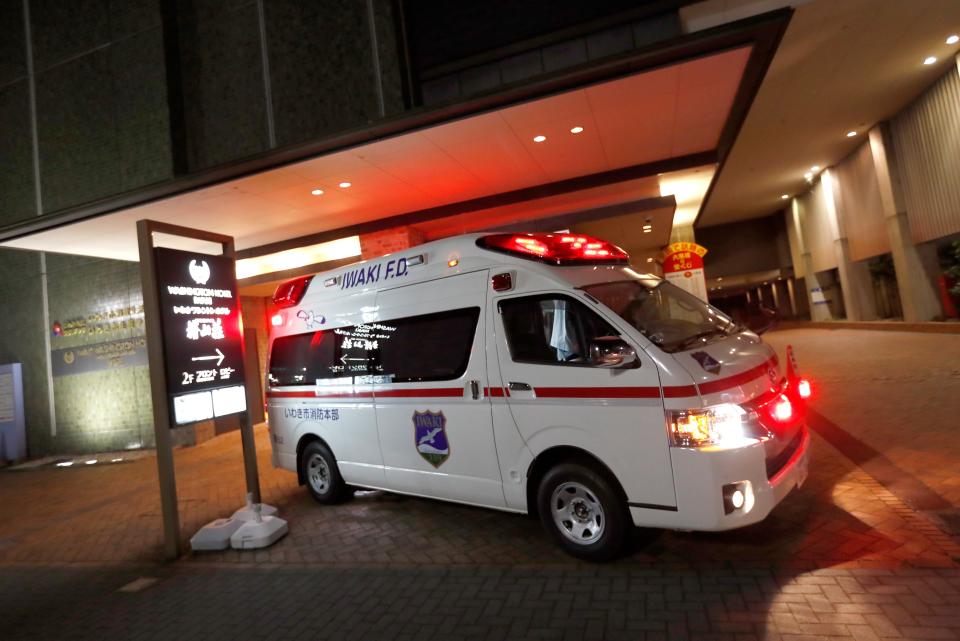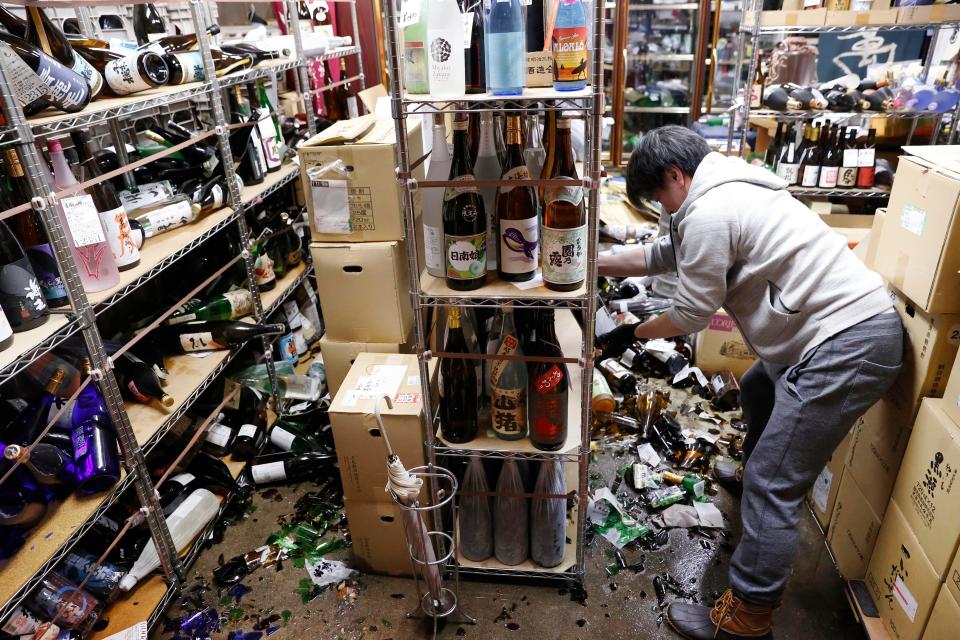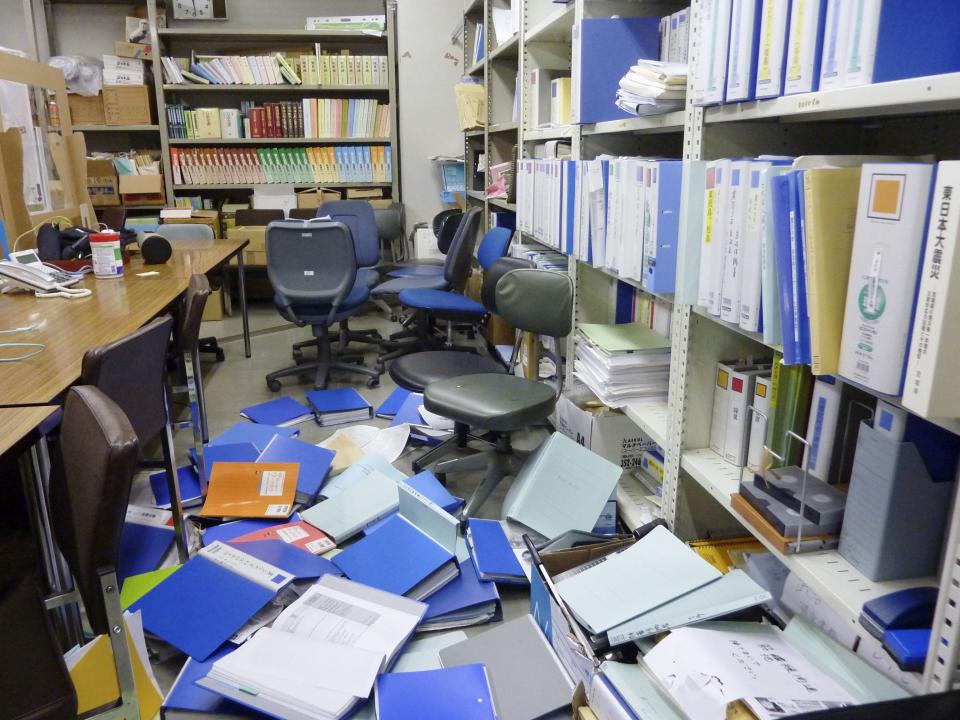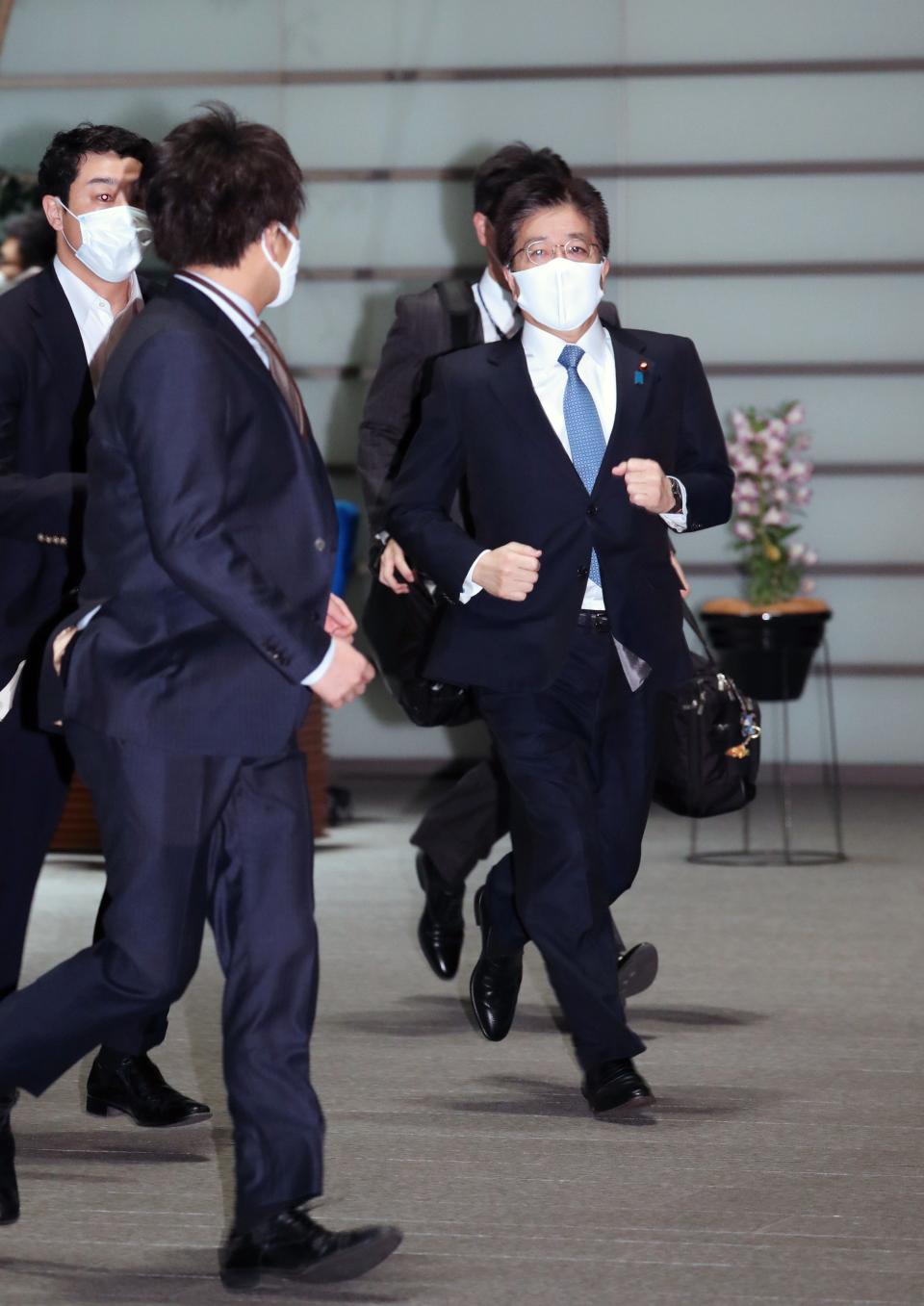Japan earthquake: 7.1-magnitude tremor hits off Fukushima coast
Watch: Goods scatter on floor in supermarket as 7.3-magnitude earthquake strikes Japan
An earthquake with a magnitude of 7.3 struck the northeastern coast of Japan on Saturday night, rekindling memories of the deadly quake that hit the same area 10 years ago.
The tremor, centred off the coast of Fukushima prefecture at a depth of 55km, left nearly a million homes without power but there were no reports of any serious injuries or deaths.
Tokyo Electric Power Company said there were no irregularities at the Fukushima Dai-ichi nuclear plant, which experienced meltdowns following the massive 9.0-magnitude Tohoku earthquake and tsunami of March 2011.

The Japan Meteorological Agency said Saturday’s earthquake should be considered an aftershock of the Tohoku quake, which was the most powerful in the country’s history.
“Because [the 2011 quake] was an enormous one with a magnitude of 9.0, it’s not surprising to have an aftershock of this scale 10 years later,” Kenji Satake, a professor at the University of Tokyo’s Earthquake Research Institute, told Japan Times.
Experts are warning of further aftershocks over the coming days, including the possibility of larger quakes.

No tsunami warning was issued although some sea level fluctuations are expected.
Video from public broadcaster NHK TV showed a portion of a highway blocked by a landslide in Soma, a city in Fukushima prefecture. The quake also caused items to fall off shelves in stores and shaking was felt 140 miles away in Tokyo.

Some people were taking shelter at evacuation centres, and were being warned to practice social distancing because of the coronavirus pandemic.
Prime minister Yoshihide Suga headed into his office immediately after reports of the quake as a crisis centre was set up by the government.
He said there were no reports of major injuries, telling reporters: “We will continue to respond, putting human lives first.”
Chief cabinet secretary Katsnunobu Kato said that at least 950,000 homes were without power after the quake but added that electricity was gradually being restored. Some trains in northeastern Japan stopped running.

The 2011 earthquake lasted for six minutes and triggered a tsunami up to 40.5m high.
It completely demolished 121,778 buildings and resulted in 15,899 deaths and 6,157 additional injuries.
Japan is one of the world’s most seismically active areas, and it accounts for roughly 20 per cent of the world’s earthquakes that are magnitude 6 or greater.
Additional reporting by agencies

